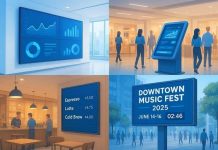The fashion world moves fast. Trends rise overnight and vanish just as quickly. New materials hit the market. Shoppers change their habits. And behind the scenes, the pressure never lets up. Designers, manufacturers, and retailers hustle to keep up.
Without the right tools, it’s hard to stay ahead. That’s where tech steps in. Fashion isn’t just about creativity anymore. It’s also about smart systems that make things flow smoothly.
Modern Challenges in the Fashion Industry
Fashion is not only about the clothes. It’s also about timing. Get it wrong, and stock sits on shelves. Move too slowly, and competitors take your place. A lot of brands have a tough time keeping up with what people want. Others face issues with tracking sales. Or they end up losing cash because of clunky processes.
Production delays happen. Mistakes sneak into orders. Customer data gets messy. That’s a recipe for trouble. Tech can help fix those problems. But not all tools work the same. The fashion industry needs something flexible and specific.
Why ERP Systems Matter
This is where ERP systems come in. These tools are great for keeping track of everything, from inventory to how you connect with your customers. They pull info from different departments into one place. So decisions can be made faster and with better data.
Using ERP software fashion companies can handle sales, stock, and supplier info all in one dashboard. This means fewer errors and faster turnarounds. Teams no longer have to dig through endless spreadsheets. That saves time and keeps the focus on what really matters—creating great products.
Improving Inventory and Supply Chains
Inventory is tricky. Carry too much and you waste money. Hold too little and you miss out on sales. It’s a balancing act. A good ERP system helps with that. It gives real-time updates. You can see what’s in stock. You can track what’s in transit. You might even notice some trends in demand.
Let’s say a jacket suddenly takes off. The system flags it. You can place new orders fast. No more waiting until shelves are empty. This kind of speed can really change the game. Especially when trends move fast and seasons change quickly.
Better Sales and Customer Tracking
Fashion isn’t just about selling clothes. It’s about knowing who’s buying and why. With ERP tools, businesses can track customer habits. They can see what’s popular in each region. They can understand what size sells best. This helps tailor marketing. It also helps with design choices.
You don’t have to guess anymore. You work with facts. That’s powerful. It leads to smarter launches and happier shoppers. You also waste less time and money on things that don’t sell.
Bringing Style and Data Together
Design and data may seem like opposites. One is creative. The other is technical. But when they work together, magic happens. Designers can use ERP data to guide decisions. They can see what colors are trending. They can learn which styles perform best in stores. This helps them stay current.
It also helps them innovate in ways that matter. They’re not just creating for art’s sake. They’re building collections that people want. That’s a big win for any brand. And it helps the bottom line.
Supporting Growth and Expansion
Growth is exciting, but it comes with headaches. More stores. More products. More complexity. Without good systems, things fall apart. Orders get lost. Warehouses mix things up. Customer service suffers.
ERP software makes scaling smoother. It can adapt as your brand grows. It handles more data. It connects more departments. Whether you’re launching in new countries or adding new product lines, it keeps things in sync.
That’s important if you want to stay organized. It also saves a ton of money. Mistakes are costly. Smart systems cut them down.
Conclusion: Tech That Works With Style
The fashion industry is changing fast. Old ways of managing things are no longer enough. You need tools that keep up. ERP software is one of those tools. It brings order to the chaos. It helps fashion companies stay focused, agile, and creative.
Using ERP software, fashion companies can manage supply, sales, and style all at once. They can grow without falling apart. They can innovate without losing track. And they can keep customers happy, season after season.
In fashion, timing is everything. With the right tech, brands can make sure they never fall behind. Whether you’re a small label or a global name, investing in smart systems pays off. It’s not just about looking good. It’s about running smooth, stylish, and strong.







































